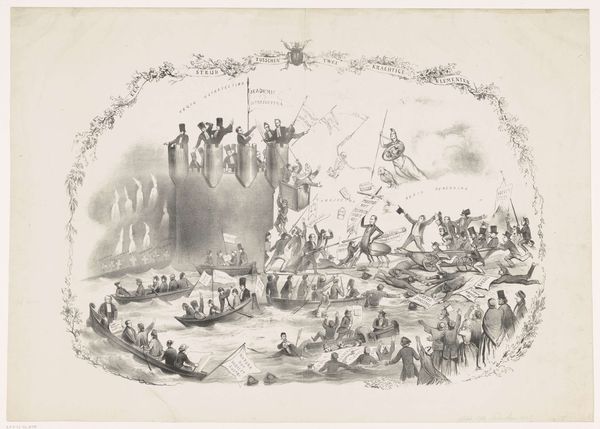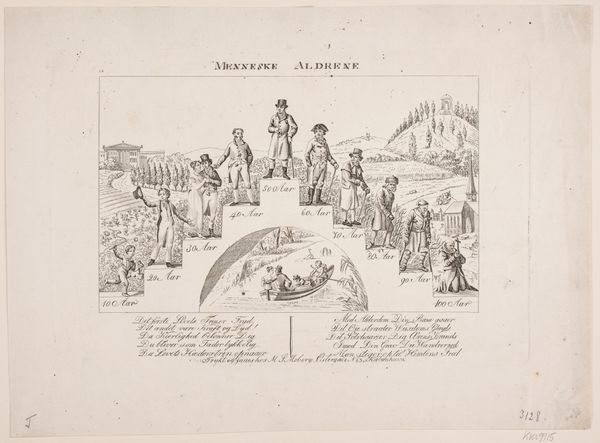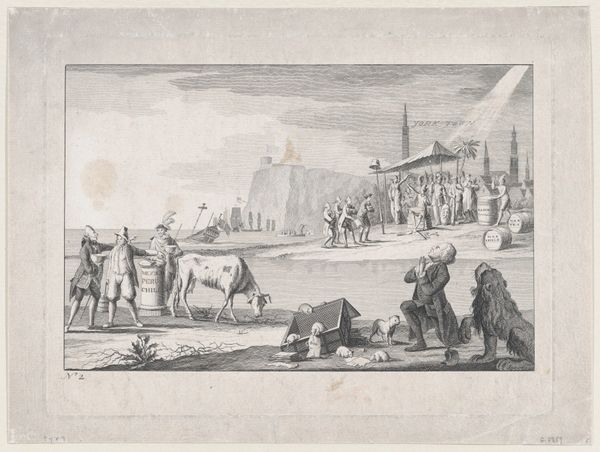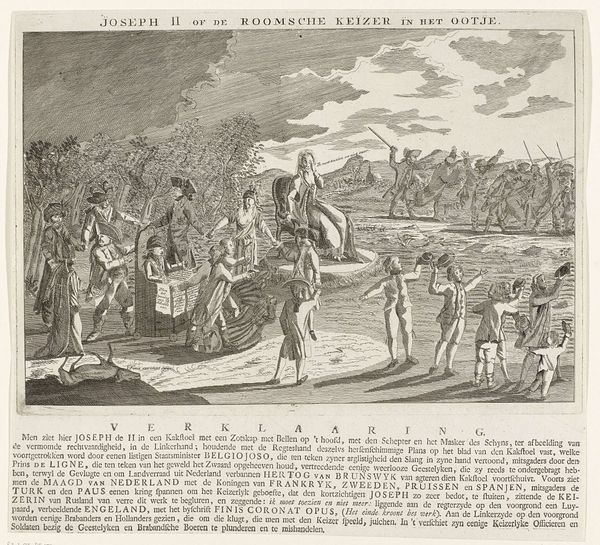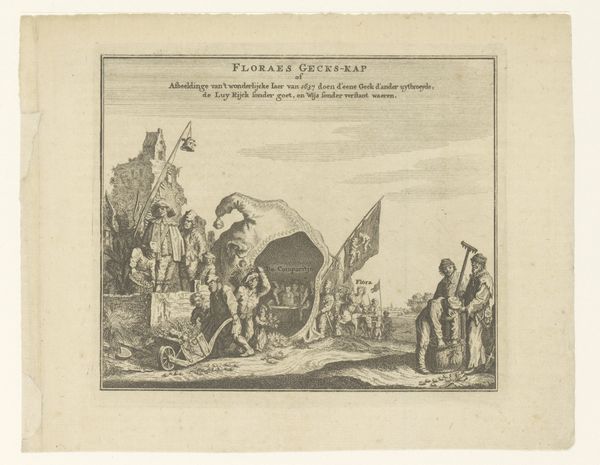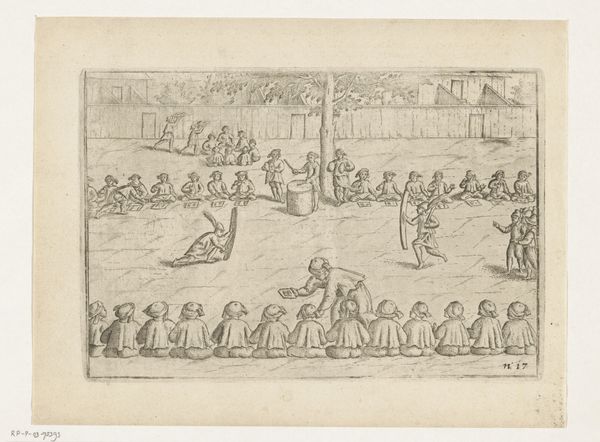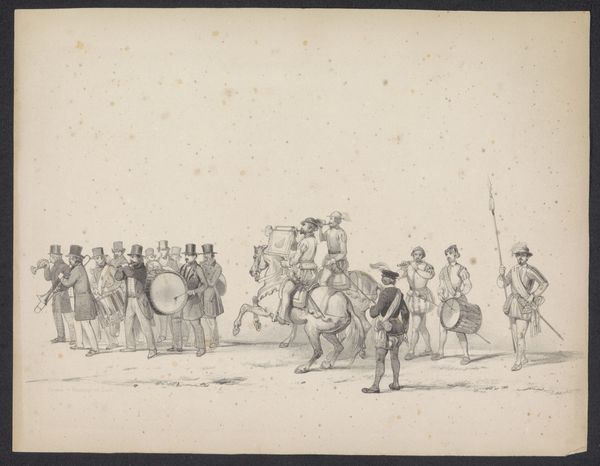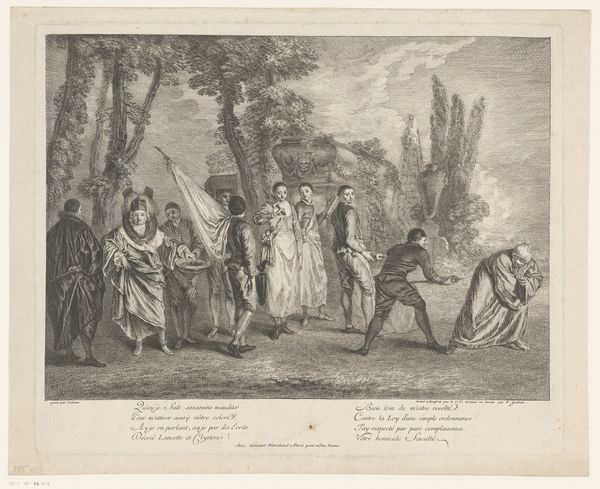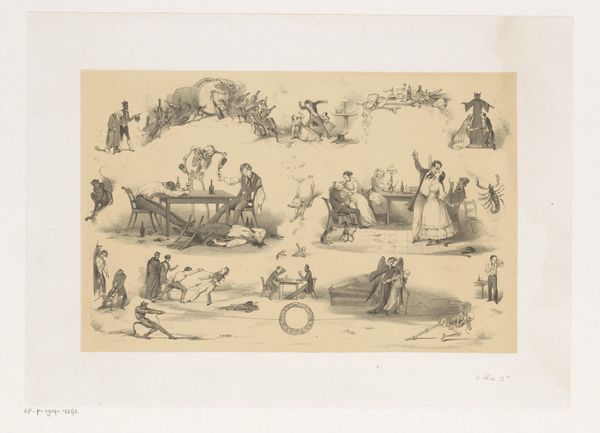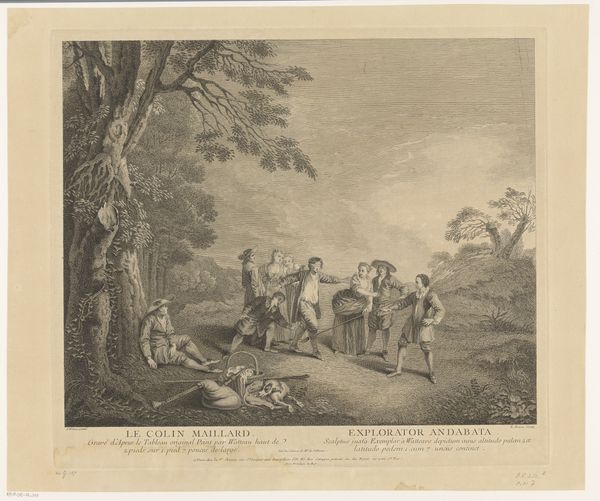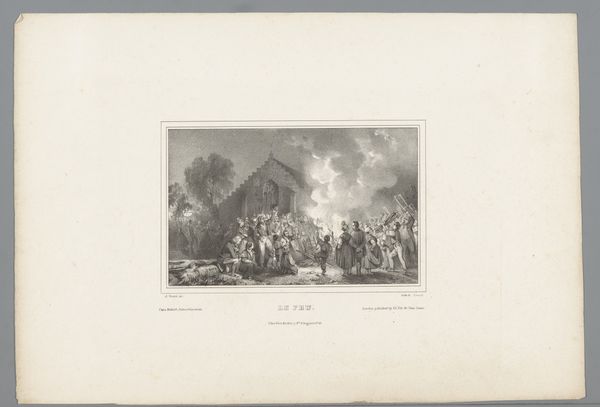
graphic-art, print, engraving
#
graphic-art
#
narrative-art
# print
#
caricature
#
old engraving style
#
genre-painting
#
engraving
Dimensions: height 260 mm, width 344 mm
Copyright: Rijks Museum: Open Domain
Editor: This is a rather peculiar engraving, titled "Spotprent in Leidse studentenalmanak, 1854," so a cartoon in a Leiden student almanac from 1854. There’s a procession of figures heading toward what appears to be a draped monument atop a hill, and they're quite the motley crew. What strikes me is how many different types of people seem to be included, and the text at the bottom indicates something about "the core of the nation." What is your interpretation of this? Curator: Indeed. What we are observing here is the public role of imagery, specifically in a moment of Dutch national identity formation. The presence of this piece in a student almanac situates it within a specific intellectual and social sphere. Consider who "the nation" was perceived to be at this time. Were all these figures represented equally in Dutch society? And what were the politics of imagining this particular cohort as “the core”? Editor: It's interesting you bring that up, because it seems to show many ordinary people - a wide range, perhaps - but they all appear to be somewhat satirical, like caricatures. Is it celebratory, or is it critiquing some specific social structure of the time? Curator: Precisely! It is in probing the caricatured element that we gain insight into the possible socio-political critiques imbedded in it. It suggests there was perhaps not a unified idea of what it meant to be Dutch or what made the "core" of Dutch identity, that students at this time were poking fun at ideas around labor and contributions. What does their satirical inclusion suggest about prevailing attitudes? Editor: That's a fascinating insight! It wasn't just a simple depiction, but a commentary on who belonged and who defined that belonging. It also hints at a conversation happening within student circles about these societal structures, doesn’t it? Curator: Exactly. Art such as this serves not just as documentation but as active participants in the construction of Dutch social and political discourse. Student publications could offer avenues for dissenting opinions and questioning.
Comments
No comments
Be the first to comment and join the conversation on the ultimate creative platform.
